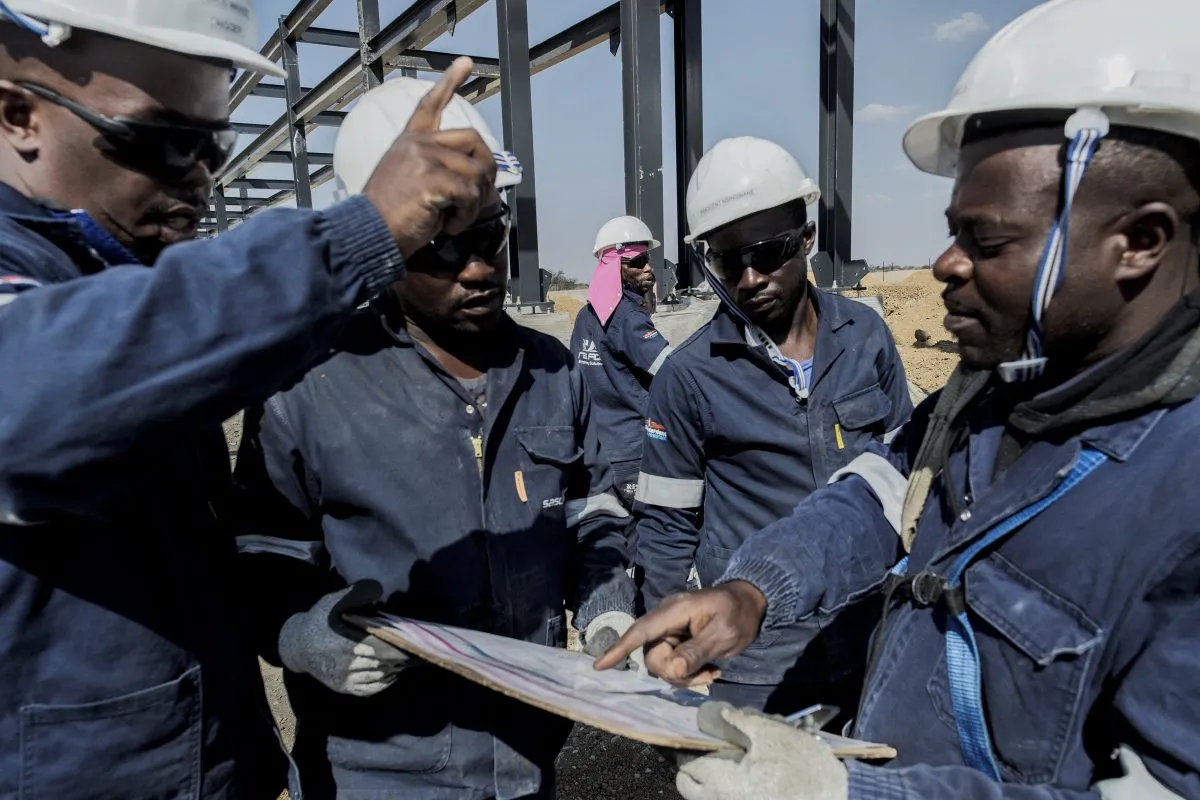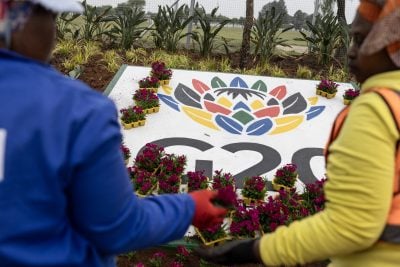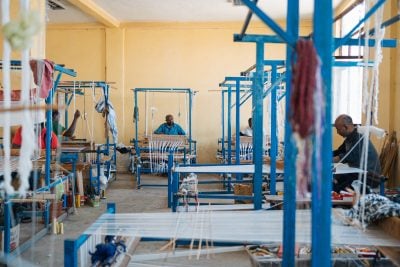“My message is simple,” Dean Macpherson, South Africa’s newly appointed minister of public works and infrastructure, tweeted shortly after his appointment to the cabinet.
“I want to turn our country into a massive construction site that drives growth which creates jobs. We want to see building cranes in every town and city.”
While Macpherson’s enthusiasm for a nation resembling an enormous Lego set might not be to everyone’s tastes, there is little doubt that South Africa is poised to indulge the minister’s construction fetish.
From transport and logistics to ICT and water, the country has for decades put up with infrastructure that fails to match the aspirations – and often the basic needs – of its people.
While great strides were initially made in the post-apartheid era in addressing racial imbalances via ambitious construction projects, progress has slowed in recent years as economic growth stalled and political crises chipped away at the delivery record of successive ANC administrations.
The gross value added of the construction sector declined from R150bn in 2017 to just over R110bn in 2023, due to what government agency Infrastructure South Africa said was “external shocks as well as internal challenges in the country” including “policy uncertainties, governance challenges and structural challenges within the industry.” The construction industry, worth 4% of GDP in 2016, was worth just 2.6% in 2023.
Even before the unveiling of the coalition government – and the arrival of the Democratic Alliance’s Macpherson – investors say there was an acknowledgement that things had to change.
“Government has recently turned to the private sector to help with the pressing issues related to infrastructure,” an ESG expert at a South African infrastructure fund told African Business prior to the election.
“Most infrastructure in South Africa is very old and has been degrading over the years – government is realising they can’t possibly solve these problems by themselves and so now are coming up with policies that are making it attractive for investors to come in. Asset owners are starting to realise that infrastructure is a good class to invest in.”
Turning the page
The funding needs are immense. According to a World Bank study in January, South Africa needs to spend between R4.8 trillion and R6.2 trillion ($254bn to $329bn) on transport, water & sanitation, basic education, and technical & vocational education & training between the years 2022 and 2030 to achieve the UN Sustainable Development Goals. The figures for the infrastructure spending are equivalent to spending between 8.7% and 11.2% of GDP per year on average.
To its credit, the previous ANC-only administration had already commenced efforts to make a dent in the figures.
In March, the government and Infrastructure South Africa launched the Construction Book 24/25, a showcase of infrastructure projects from the government and state-owned companies during the fiscal year. The document promises “great opportunities” for private sector players through 153 projects with a total capital expenditure of R158.54bn.
The projects cover everything from sustainable water supply to remote Limpopo communities, to expanding the arrivals and departures areas of the airport in the affluent coastal town of George. Investors say the book is an open invitation from government to get involved.
“They (government) have come out and said they need the private sector because they can’t do it themselves. When you have a lot of these pressing matters it creates an environment between the government and private sector,” says an infrastructure transaction lawyer at an asset manager.
“In the last 18 month it’s just an accumulation of the urgency, the need and requirement to deploy capital in the South African market,” he says.
Such forward-thinking infrastructure planning, he says, gives pension funds and institutional investors the long-term horizons they need to invest.
Transport and water see biggest needs
Nowhere is the need for fresh capital more pressing that in transport infrastructure. Road projects amounting to R60.4bn account for 123 of the Construction Book’s 153 projects, while rail (2 projects, R10.1bn), ports (3 projects, R9.82bn) and airports (4 projects, R7.8bn) also have substantial investment needs. Transnet, the largely mismanaged state-owned entity which runs the freight rail network and manages the nation’s ports, has long been written off as unequal to the task of running an efficient nationwide logistics network.
According to the World Bank’s January report, while there are certain areas of the transport system that operate well, “others are in severe decline or outright collapse”.
The weakest performance is on access, both in rural and urban areas. According to 2020–21 data, only 57.5% of the rural population lives within 2 kilometres of an all-weather road. Less than 10% of the unpaved rural roads are in good or very good condition.
In urban areas, transit systems are similarly neglected and are “not at the level of mass rapid transport,” according to the Bank, given the “poor interconnection of rail, bus rapid transits and minibus taxis”. A minimum spending scenario to improve matters would cost R1000bn between 2022-30, or around 1.68% of GDP.
“132 projects in transport includes port, roads, airports and logistics – there’s huge impetus on trying to solve transport issues,” says the transaction lawyer, arguing that improvements would be felt well beyond the country’s borders.
“South Africa is very key to the rest of the continent as a gateway to many countries inland…prioritising that sector is key to the continent,” adds the ESG expert.
Water is similarly in need of investment – R1125bn, or 1.97% of GDP, needs to be spent between 2022 and 2030 to meet the World Bank’s minimum spending scenario, which would provide universal access to the basic service level and would allow for investments in alternative technologies and conservation measures. Maintaining and upgrading existing water systems, rather than building new ones, must be the priority, the Bank says.
“Water is obviously a big one given water scarcity in parts of the country, including Johannesburg,” says the ESG professional.
“There’s lots of projects like the Lesotho Highlands which has been important for Gauteng. The opportunities are there.”
The Highlands project, which has first-phase origins dating back to the late 1990s, involves the construction of an intricate network of tunnels and dams to divert water from the mountains of Lesotho to South Africa.
In August 2023, the New Development Bank, commonly known as the BRICS Bank, loaned state-owned Trans-Caledon Tunnel Authority R3.2bn for Phase II of the Highlands project, which will be used to construct a dam and reservoir, a 38-kilometre-long water transfer tunnel, roads and bridges, and other infrastructure. Three other schemes highlighted by the Construction Book envisage more substantial private sector involvement.
The role of the state
Indeed, one of the key concerns infrastructure investors still have with major projects is discomfort over the role of the state and its often dysfunctional entities. The Construction Book projects mostly envisage close cooperation with either the government or its SOEs – partners which private sector investors would sometimes prefer not to have to deal with.
“I don’t think we’re going to see full exit from the government on some of these assets, we’re going to see a partnership with private players,” says the transaction lawyer.
“There has to be an element of balancing government initiatives with private debt and that gives comfort, especially from our perspective, that these are state-owned companies, but the operational way they do it has to be balanced with the private sector. That’s where the need is. We’re not going to see Transnet being privatised, but we’ll see unbundling like at Eskom, we’ll see a lot of those things happening. But I don’t think full privatisation is going to happen.”
As a result, some of the areas that may prove most attractive to investors include those with a historically light government imprint. Investors say renewable energy – which was long neglected by the government and Eskom, its defective power utility, in favour of fossil fuels – offers a huge opportunity for private investors. Recent government legislation has made it much easier for private sector players to generate and sell their own power, reducing the national reliance on Eskom, which has a recent history of repeated power cuts.
Energy infrastructure investment has ticked up from R30bn in 2021 to around R38bn last year, according to Infrastructure SA, while the Renewable Energy Independent Power Producer Procurement Programme has galvanised private sector involvement in solar, wind and other renewables.
“The South African government has a made a commitment to have about 49% of its energy generated from renewables by 2030. Obviously that’s a hard commitment given load shedding, but as part of the Construction Book you can clearly see it’s a priority area for the government with independent power producer (IPP) structures put in place for the renewable sector. It’s an opportunity for investors and a priority for the government,” says the ESG expert.
Similarly, digital technology is a sector in which infrastructure players might find a relatively open field for their operations.
“From an economic infrastructure perspective we’ve seen a lot of traffic in information communications technology, particularly around digitalisation and fibre rollouts,” says a fund principle at another major investment firm.
“You’re seeing a lot of traffic around fibre being deployed in peri-urban or township areas. We’re also having a lot of conversations around data centres. With the arrival of AI there’s a mad rush to support that kind of network demand, so a lot of financing propositions are coming to us.”
Making an impact
As well as providing returns to shareholders, such projects can have a substantial social impact, claims a private equity professional at a firm active in the South African market.
“We see economic infrastructure as a catalyst, not only from an economic but a development perspective. Generally when capital goes to developing or building roads or airports, social benefits are increased jobs, increased economic activities, and SMEs [small and medium enterprises] benefit from contracting. We look at economic infrastructure from a commercial perspective but also around the social and economic benefits that capital can have in those areas.”
Such positivity is welcome to the new infrastructure minister and his schemes of erecting cranes across the nation. Visiting Infrastructure South Africa in Johannesburg, Dean Macpherson reiterated that his coalition government is ready for a new era and insisted he would be the industry’s “biggest political champion”.
“I really want infrastructure to become the pride and place of economic growth in South Africa…we cannot grow an economy without an infrastructure boom in this country.”
Want to continue reading? Subscribe today.
You've read all your free articles for this month! Subscribe now to enjoy full access to our content.
Digital Monthly
£8.00 / month
Receive full unlimited access to our articles, opinions, podcasts and more.
Digital Yearly
£70.00 / year
Our best value offer - save £26 and gain access to all of our digital content for an entire year!
 Sign in with Google
Sign in with Google 



